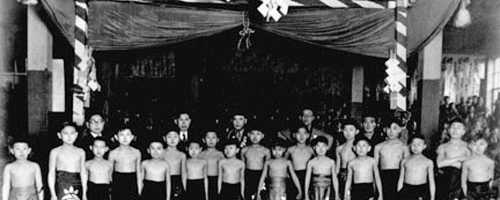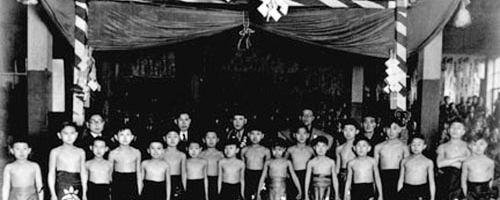The area known as Portland’s Old Town Chinatown looked very different 100 years ago. It was once Portland’s Japantown. Founded in the 1890s, Nihonmachi, as it was then called, was a flourishing Japanese community that existed in the area between Northwest Broadway and the Willamette River.
Japantown: A thriving memory

The area known as Portland’s Old Town Chinatown looked very different 100 years ago.
It was once Portland’s Japantown. Founded in the 1890s, Nihonmachi, as it was then called, was a flourishing Japanese community that existed in the area between Northwest Broadway and the Willamette River.
Dr. Jacqueline Peterson Loomis, founder of the Old Town History Project and a history professor at Washington State University, teamed up with former residents of Portland’s Japantown at the Smith Memorial Student Union on Tuesday in a lecture titled “What Happened to Portland’s Japantown? Place, Community and Identity in the Stories of Coming Home.”
In the time between its settlement and 1941, Japantown was a thriving hub for immigrants and Japanese-Americans, with nearly 4,000 residents.
All this changed in the aftermath of the Pearl Harbor bombing in 1941, when the United States entered World War II. President Franklin D. Roosevelt signed Executive Order 9066, which issued exclusion orders to round up Japanese-Americans and force them into internment camps.
Portland’s Japanese community was sent to the Pacific International Livestock and Exposition Center and were held indefinitely against their will. What happened to Japantown and its residents after the war and internment is a story rarely heard.
“What happened to those who returned to Portland after the war?” Loomis asked the crowd. “It’s one of those questions that needs to be answered now that it has turned to scholarly attention.”
The question may be answered through efforts such as the new “Coming Home” exhibit at the Oregon Nikkei Legacy Center, of which Loomis is the curator. The aim is to discover the effects of relocation through the firsthand accounts of nine community members.
“There’s an opportunity here to help the public understand the history and diversity of this part of town,” Loomis said.
The lecture explored themes from the exhibit and allowed residents from Portland’s Japantown to share their stories of life before and after internment.
Residents like Jean Matsumoto shared fond memories of a childhood spent exploring the streets of Portland, playing in the Skidmore Fountain and swimming in the city’s rivers.
George Azumano told stories of life before and after the war. “When I was a youngster, I lived in Japantown until I was 5,” Azumano said. “Japantown represented a new kind of home.
“But things were different after the war,” Azumano added.
Ed Tamiyasu shared the difficulties he experienced in life in Japantown after release from internment.
“I didn’t want to be Japanese after the war. I didn’t want to speak the language,” Tamiyasu said. “I thought of myself as white because I didn’t want to be Japanese.”
Anti-Japanese hostility was a constant struggle for residents, but discrimination and economic struggles brought the remaining Japantown community closer together.
“Japanese were not always welcome in many places in Portland,” Tamiyasu said. “I can’t speak on what it was like before the war. But after, we began to form a cohesive community.”
Some people chose not to come back to Japantown after release from internment.
“Populations in Japantown eroded,” said Henry Sakamoto, a former resident of Nihonmachi.
“It was easier to go to large, populated areas. It was easier to find work,” Sakomoto said. “It was one of the reasons why Portland’s Japantown was never resurrected to its former glory.”
While historians have no hard numbers, Japantown’s population is estimated to have dwindled to somewhere between 1,000 and 2,000 residents after the war, Loomis said.
Portland’s Japantown eventually faded from memory and slowly became Portland’s Chinatown. The former community may be gone, but the memory remains in the stories and histories that remain.
“Change is inevitable,” Matsumoto said. “We’re going to all have to learn to accept change.”





